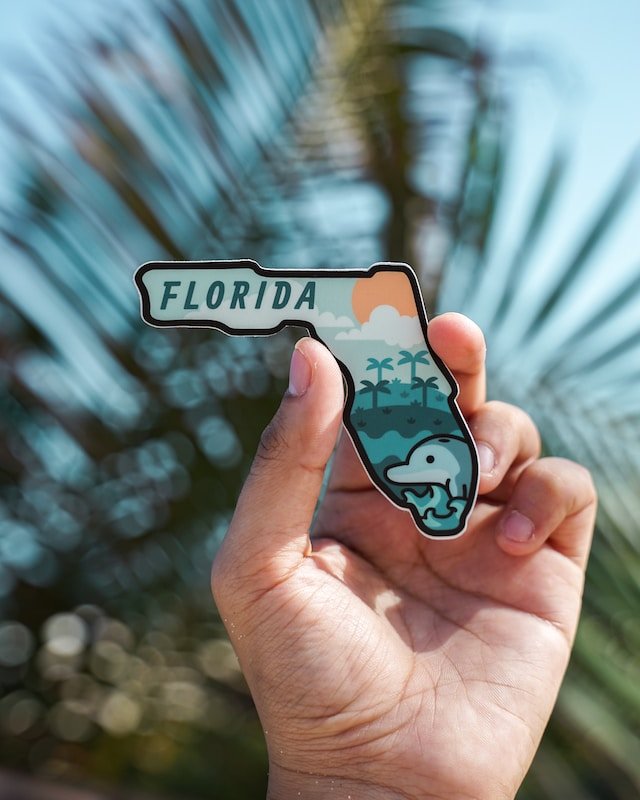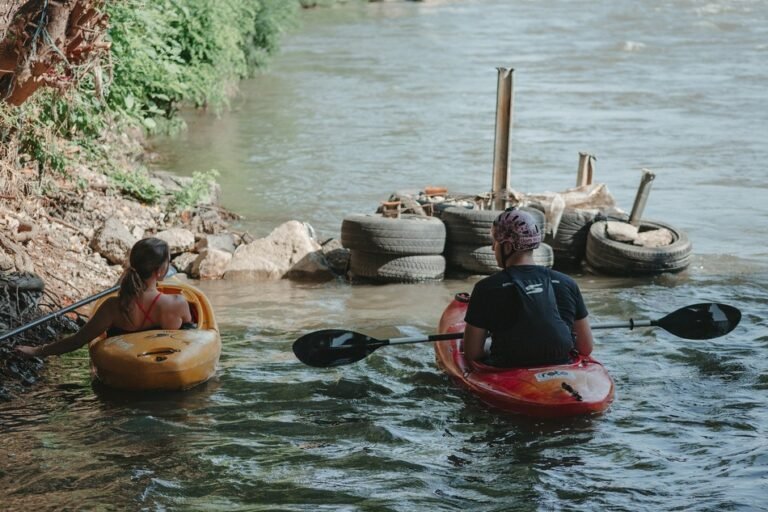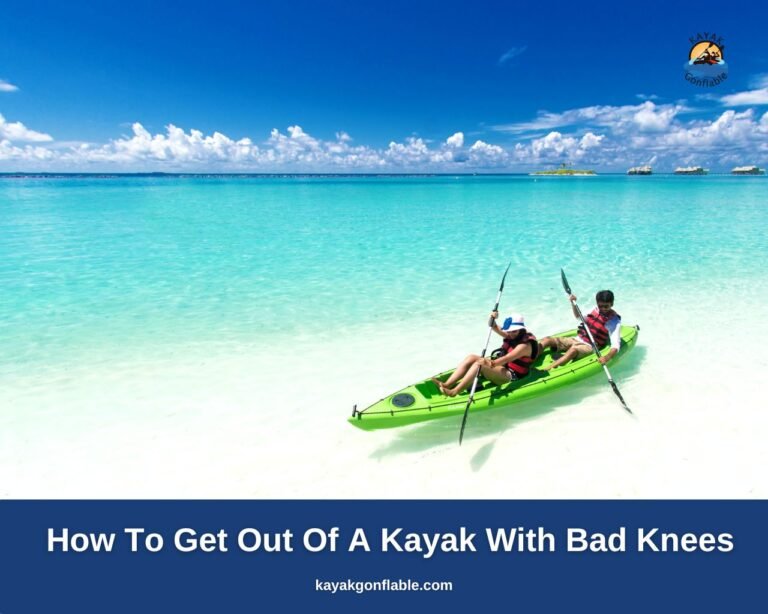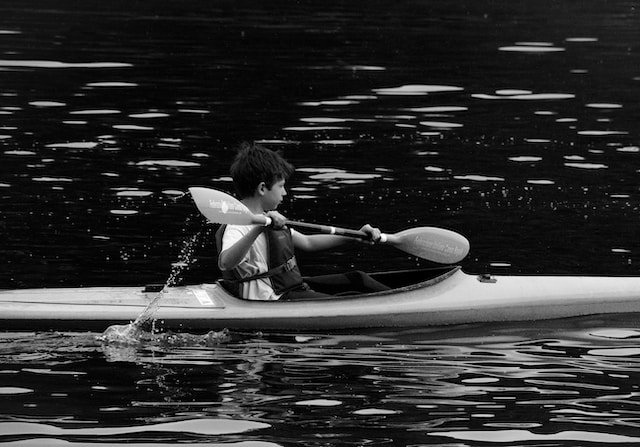How To Choose A Kayak For Your Adventures
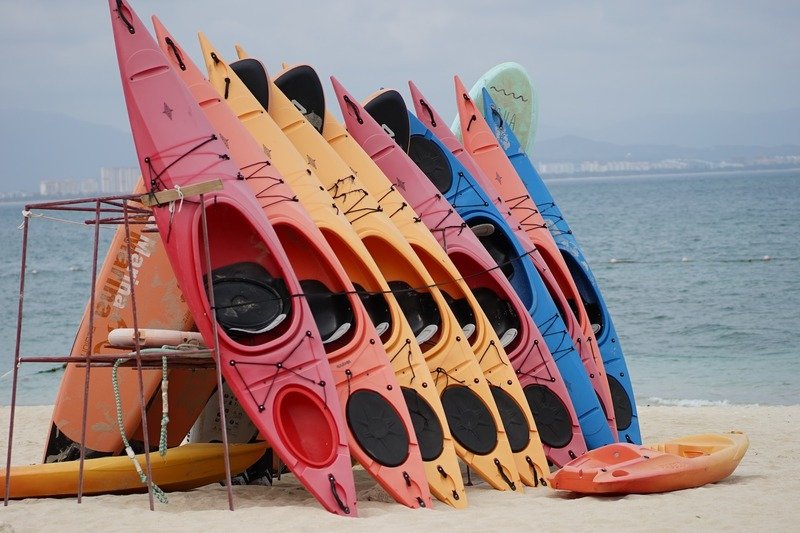
Kayaking is a famous paddle sport known as a great way to enjoy nature’s beauty while having a workout. If you are reading this article, you most likely tested kayaking out to verify the validity of the rumors of this sport and are sold that it is for you.
You like most kayakers now desire a kayak of your own and want to make an informed choice in getting this watercraft that will be your companion for years to come on the water.
You may not be a novice kayaker but it has been a while since you got your vessel and you want to get a new one or upgrade and desire information to make the right choice.
Several kayak types exist some for beginners while others are reserved for experienced paddlers due to what they will be used for.
Some kayaks exist to give you a relaxing time on the water while others help you get that exhilarating and adventurous feeling you desire to experience on the water.
With so many options available it is easy to become overwhelmed and not know which one to choose. In this article, all the necessary knowledge required to get a kayak best suited for your needs is brought to you.
What To Consider When Choosing A Kayak
A kayak can be a versatile and fun addition to anyone’s outdoor gear collection, but before you buy one, there are a few things you need to consider.
The answer to certain questions and the evaluation of your resources should help you make the right choice. The things to consider are discussed below.
How Often Will You Use The Kayak?
How often you’ll use the kayak is something to ponder before purchasing a kayak. If you’re a casual paddler who only goes out a few times a year, you don’t need to spend a lot of money on a top-of-the-line kayak.
In fact, you might be better off renting or borrowing one for your occasional trips. If you plan to use the kayak frequently, however, you’ll want a model that is stable, comfortable, and durable.
If you want a kayak you can take out once in a while when you are in a kayaking mood, you could get a good kayak that is not necessarily as durable or expensive as that of someone who desires to use his kayak every day.
What Kind Of Terrain Will You Be Kayaking On?
When choosing a kayak, one of the first things you need to consider is the kind of terrain you will be kayaking on. Kayaks are designed for different types of water conditions, so it’s important to select the right one for the activity you will be participating in.
For example, if you’re kayaking in a river with rapids, you’ll need a kayak with a lot of stability and maneuverability. And if you’ll be kayaking on open water, you’ll need a kayak with good tracking and speed.
Also, kayaks designed for coastal waters and rapids are typically narrower and have less storage capacity than those designed for open-water paddling.
In addition, the shape and material of the kayak can impact its performance on different types of terrain so kayaks designed specifically for some water conditions are to be used only in those conditions for the safety of all those involved.
If you’re a beginner, it might be best to buy an all-purpose kayak that can be used in a variety of settings.
Purpose Of The Kayak: Recreation, Fishing, Racing, Touring, or Whitewater Kayaking
One of the most important factors to consider before purchasing a kayak is the purpose of the kayak. Are you looking for a recreational kayak to paddle on calm waters?
A fishing kayak to go after trout in a river? Or an expedition kayak to tackle the biggest rapids you can find? Your answer will determine which type of kayak you should purchase.
If you want a kayak, you probably already love spending time on the water but that is not enough to help you pick the right kayak for you.
Deciding what you want to be doing while navigating in your kayak will help you quickly streamline the available options and make the right choice.
As several activities can be performed on the water, kayaks are typically designed to perform a particular task so some kayaks are best suited for recreation, fishing, racing, touring, or whitewater kayaking.
Some kayaks can be used to perform two or even multiple activities so it all comes down to your preference. Once you know what you intend to use the kayak for, it becomes much easier to choose the right kayak.
How Many People Will You Be Kayaking With?
When selecting a kayak, one of the most important factors to consider is how many people will be kayaking with you.
Kayaks come in all shapes and sizes and can accommodate anywhere from one to three people. If you want to kayak alone, a solo kayak large enough to accommodate any gear you wish to bring should do the trick.
However, if you’re looking for a kayak that can accommodate more than one person, you’ll want to consider the size of the kayak and how much weight it can hold.
If you’re going to be kayaking with friends or family especially, it’s important to choose a kayak that will comfortably fit everyone. If you’ll only be kayaking with only one person, a tandem kayak is a good option.
However, if you’ll be kayaking with more people, an inflatable kayak can accommodate up to three people.
Single Or Tandem Kayak
Kayaking is a great way to enjoy the outdoors and get some exercise. There are two basic types of kayaks: single and tandem. A single or solo kayak is for one person, while a tandem kayak is for two people.
Some people prefer single kayaks because they are more maneuverable, while others prefer tandem kayaks because they are more stable. If you are new to kayaking, it is probably best to start with a tandem kayak.
Should you choose a tandem kayak and decide to go kayaking with a partner, remember to not only employ safe kayaking practices but also synchronize your paddle strokes.
Coordinating your strokes is crucial in preventing the paddles from colliding with each other from time to time and disrupting the vessel’s stability so you and your partner should work out a feasible paddling pattern.
What Is The Kayak’s Weight Limit?
When selecting a kayak, one of the key factors to consider is the weight limit. This is the maximum weight that the kayak can safely hold.
The weight limit is affected by the kayak’s design and materials. It’s important to choose a kayak that can safely hold your weight and all the gear you desire to bring.
If you exceed the weight limit, you may risk capsizing or damage to the kayak. If you intend to kayak with other people, ensure the kayak can support your combined weight and you should be fine.
What Is Your Budget?
A kayak is a great investment for anyone interested in spending time on the water. But like any other purchase, there are some factors to consider before you buy the item.
One of the most important is your budget. How much you can afford to spend will ultimately decide which kayak you will purchase.
Kayaks range in price from a few hundred dollars to several thousand so your income will let you know which set of kayaks is ideal for you.
It’s important to set a budget and then find the kayak that falls within that budget so you can adequately attend to all your needs.
Consider Your Experience Level
When choosing a kayak, there are many factors to consider. Size, shape, and weight capacity are important, but what about your experience level?
It’s important to choose a kayak that is appropriate for your skill level. If you are a beginner, you’ll want a kayak that is easy to maneuver and stable. If you’re more experienced, however, you may want a kayak that is faster and has more storage capacity.
It is paramount that any kayak you choose matches your skill and experience level so you can easily handle it and be safe on the water. Kayaking is a fun sport and no unnecessary risks should be taken.
The Type of Kayak: Sit-In Or Sit-On-Top?
Kayaks are generally divided into two groups based on their cockpit style with kayaks having an open cockpit design being sit-on-top kayaks while those with closed cockpits are called sit-in kayaks.
The cockpit design ensures paddlers have a completely different experience on the water when in a sit-in or sit-on-top kayak.
Sit-in and sit-on-top versions of kayaks used for different purposes exist so kayakers have to decide whether they want to paddle with water splashing them every so often (a common experience in sit-on-top kayaks) or they prefer to kayak shielded from the water (experienced in sit-in kayaks).
Sit-In Kayak
The sit-in kayak is a type of kayak that allows the paddler to sit inside the kayak as they paddle. This type of kayak is often seen as more comfortable and stable than other types of kayaks, which can make it a good choice for beginner paddlers.
Sit-in kayaks also provide more protection from the elements than other types of kayaks, making them a good choice for paddlers who plan to spend a lot of time on the water.
Pros
Sit-in kayaks have enclosed cockpits and seats to increase comfort while kayaking. They also protect the paddler from the elements so they are popular among kayakers. The pros of sit-in kayaks include:
- A sit-in kayak is perfect for those who want a little more stability and comfort while kayaking.
- These kayaks have a wider and flatter bottom which makes them more stable in the water.
- They are also roomier than traditional kayaks, making them a good option for those who want to spend a longer time on the water.
- They are more efficient to paddle than sit-on-top kayaks because they have a lower center of gravity.
- The cockpit offers a measure of protection from the elements. This protection can be reinforced with spray skirts. Spray skirts are waterproof materials fitted to the cockpit of the kayak to keep water out of the kayak as you paddle.
- Sit-in kayaks also tend to have more storage space than other kayaks.
Cons
As with all things, the likability and efficiency of sit-in kayaks do not stop them from having cons. The disadvantages of this kayak type are given below.
- They can be difficult and frustrating to get in and out of.
- If you capsize, you could potentially become trapped inside the kayak.
- They can be difficult to maneuver in certain situations.
- One of the biggest cons of using this type of kayak is that you are unable to stand up and paddle. This can make it difficult to navigate through tight waterways and can also be tiring if you have to paddle for a long time.
Sit-On-Top Kayak
The sit-on-top kayak is a relatively new design that has gained popularity in recent years. This type of kayak does not have a cockpit in which the paddler sits.
Instead, the paddler sits on top of the kayak and uses a paddle to propel himself through the water. This type of kayak is a great choice for paddlers who can remain on top of the kayak while they paddle.
These kayaks have a large open cockpit that makes it easy to sit on top of the kayak and gives you more room to move around. Sit-on-top kayaks are a good choice for fishing because you can easily move around to get the best spot.
These kayaks also have a good range of storage and can carry up to 400 pounds. A sit-on-top kayak is a great choice for beginners because it is stable and easy to get in and out of.
Pros
Sit-on-top kayaks are great for several reasons. The advantages of these kayaks include:
- A sit-on-top kayak is a great choice for beginner and experienced kayakers alike.
- They are stable and easy to maneuver, making them ideal for those just starting out.
- They are easy to get in and out from which is a real bonus for novice kayakers.
- They also offer more mobility to paddlers due to their open cockpit design.
- They are equipped with scupper holes that allow any water that enters the vessel to be drained easily so they cannot be swamped. The scupper holes also provide a convenient place to run a loop cable when locking the kayak which is essential for security.
Cons
The sit-on-top kayak has become a popular choice for many paddlers in recent years. This style of kayak has a lot of advantages over the traditional, enclosed kayaks.
However, there are also some disadvantages to the sit-on-top design that should be considered before making a purchase. Here are the five main cons of sit-on-top kayaks:
- They can be more difficult to maneuver than enclosed kayaks.
- If you are not careful or are unaccustomed to sitting on top of a kayak, you may end up flipping over.
- They are not as stable as an enclosed kayak and can be more difficult to control in windy conditions or rough waters.
- They do not glide as well on the water and are less efficient when paddling than their sit-in counterparts.
- They are only ideal for warm weather as they offer no protection from the waves and elements so you are in danger of hypothermia if you are kayaking on a sit-on-top kayak in cold weather.
Hull Type
The kayak hull is the bottom part of the vessel that sits in the water and provides the primary source of resistance against the water as you paddle.
The hull is often shaped to provide better performance in the water. It is important to find a kayak with a hull that offers good tracking and stability while remaining lightweight.
There are a variety of hull designs available on the market, so it is important to do your research before making a purchase.
Types of Stability
Hulls help keep your kayak stable. All kayakers should know that there are two types of stability and the type of hull a kayak has plays a major role in how stable it is. The types of stability are:
- Primary Stability: Also called initial stability, it refers to how stable the vessel is when you are entering the kayak. It is a measure of how unlikely you are to flip over when entering your kayak and sitting down.
- Secondary Stability: This refers to how stable the kayak is once you start paddling. It is a measure of how unlikely you are to roll over as you start paddling through the water.
Types of Hulls
Flat Hull
Flat hulls on a kayak are becoming more popular as people are looking for a faster and more stable ride. Kayaks with flat hulls have less drag in the water, which makes them faster.
They are also more stable because the kayak is wider, making it harder to tip over. Flat hulls are great for fishing because they provide a smooth ride and are less likely to spook fish.
Flat-hull kayaks are ideal for beginners because they are stable and easy to maneuver. Flat-hull kayaks also have great primary stability.
Rounded Hull
A kayak with a rounded hull can move more easily through the water than a kayak with a flat hull. A kayak with a rounded hull also has less of a chance of flipping over in rough water than a kayak with a flat hull.
This is because rounded hulls on kayaks offer more secondary stability making the kayak more maneuverable.
V-Shaped Hull
A kayaker’s dream come true, the V-shaped hull on a kayak offers speed and stability. The V-shaped hull slices through the water and provides less resistance than a flat bottom.
This results in less effort needed to paddle, which means you can go further and faster. The V-shape also provides stability, so you feel more secure when paddling in rough waters.
Kayaks with V-shaped hulls may feel unstable at first as they don’t have much primary stability but they more than make up for this by having a lot of secondary stability.
Pontoon
Pontoon hulls are becoming more and more popular on kayaks. They provide great stability and tracking, making them perfect for fishing or recreational paddling.
Kayaks with this hull type sacrifice speed for stability. They have great primary and secondary stability making them safer but also slower than other kayaks.
There are a few things to consider when choosing a pontoon hull for your kayak. First, you need to make sure that the kayak has enough space to accommodate the pontoons. Also, make sure that the pontoons are the right size for your vessel.
I’ve seen kayaks with pontoons that are too small, and they look like toy boats. If the pontoons aren’t big enough, you can damage your kayak while fishing or paddling.
Chine
Chine is a word that is used in boatbuilding and refers to the angle of the bottom of a boat’s side from the vertical. It refers to how the bottom of a vessel meets the sides of the vessel.
A kayak’s chine can be either hard or soft though nowadays, many kayaks have their chine in between these extremes.
Hard chines are created by angling the edges of the kayak’s bottom panel upwards while soft chines are created by tapering the edges of the kayak’s bottom panel towards the middle so that the bottom meets the sides in a more rounded fashion.
In kayak design, the chine angle is often considered an important design parameter because it directly affects the hull’s performance. This is because the softer the chine, the greater the secondary stability the kayak will have and vice versa.
Size And Weight
The size and weight of the kayak are also important criteria to consider when choosing a kayak. The size of the kayak will determine how comfortable you will be while paddling. If the kayak is too small, you may feel cramped and uncomfortable.
If it is too large, you may have trouble maneuvering it. Larger kayaks provide more stability and are better for beginners, while smaller kayaks are more maneuverable but can be less stable.
The weight of the kayak will affect how easy it will be to transport and paddle the kayak. The heavier the kayak, the harder it will be to lift, portage, and transport.
This is especially true if it is a solo kayak and no one is around to help you. You should give much thought to this so you can find the right balance in size and weight for your kayak.
Length And Width
When purchasing a kayak, there are many factors to consider and the length and width of the kayak are two such important factors. The length of the kayak will affect how fast the vessel moves through the water and how easy it is to turn.
The width of the kayak will affect how stable it is and how much storage space it has. It is thus very important to choose a kayak that is the right size for your needs.
Before picking a kayak, remember that the longer the watercraft the faster it would go and the easier it will be to maintain in a straight line. This means that if you want speed in your vessel you should pick a long and narrow one.
If you’ve changed kayaks before from a 10-foot to a 12-foot for instance you will be able to tell almost immediately that your new kayak covers more ground per unit of time than the former one.
While long and narrow kayaks are indeed faster, they tend to sacrifice maneuverability and stability.
Shorter and wider kayaks make maneuverability and stability their fort at the expense of speed so your choice of kayak should be one that adequately balances the length and width of the vessel to meet your requirements.
Consider Your Storage And Transportation Options
Another important thing to consider that many kayakers often forget is where you intend to store the kayak and how will you move it from place to place.
Proper storage is required if you want to keep the kayak in good condition as kayaks can be quite bulky and need care so before purchasing a kayak, make sure you already have where to store it.
You could store the vessel indoors or outdoors according to your resources. If you can afford it, you can even store the kayak in a storage center.
Your transportation options should also be considered as if you don’t leave near water, you will need to move your kayak from its location to the water, and carrying the vessel isn’t always the best option.
Kayaks can be a great way to get out and enjoy the water, but it is important to select the right one for your needs. There are many different types of kayaks available on the market, so do your research and find the perfect one for you.
The type of kayaking you plan to do, your budget and your personal needs and preferences should all be taken into account before making a choice.
Be sure to ask questions and take test drives before making a purchase. Always employ safe practices on the water, and most importantly, have fun out there!


